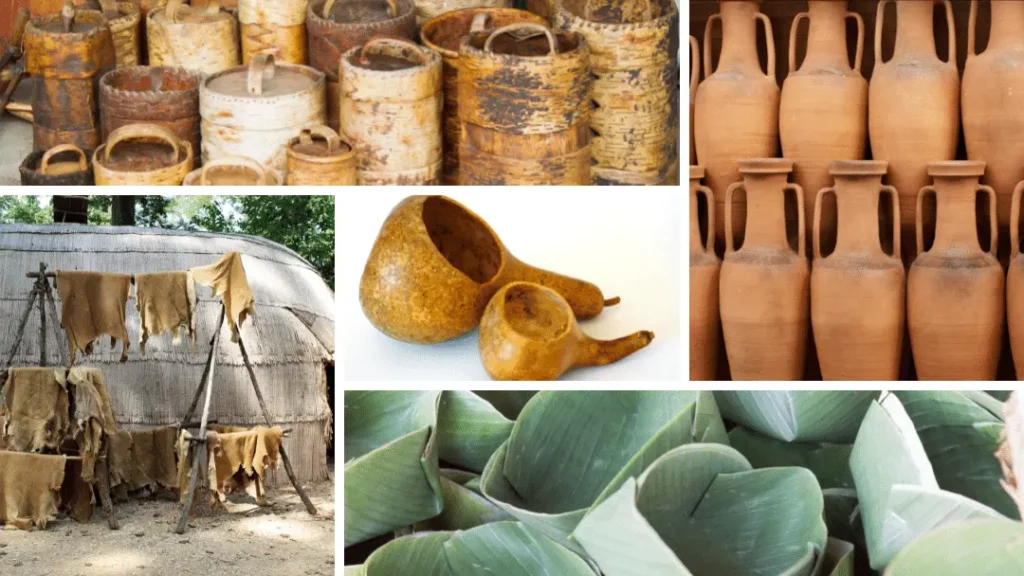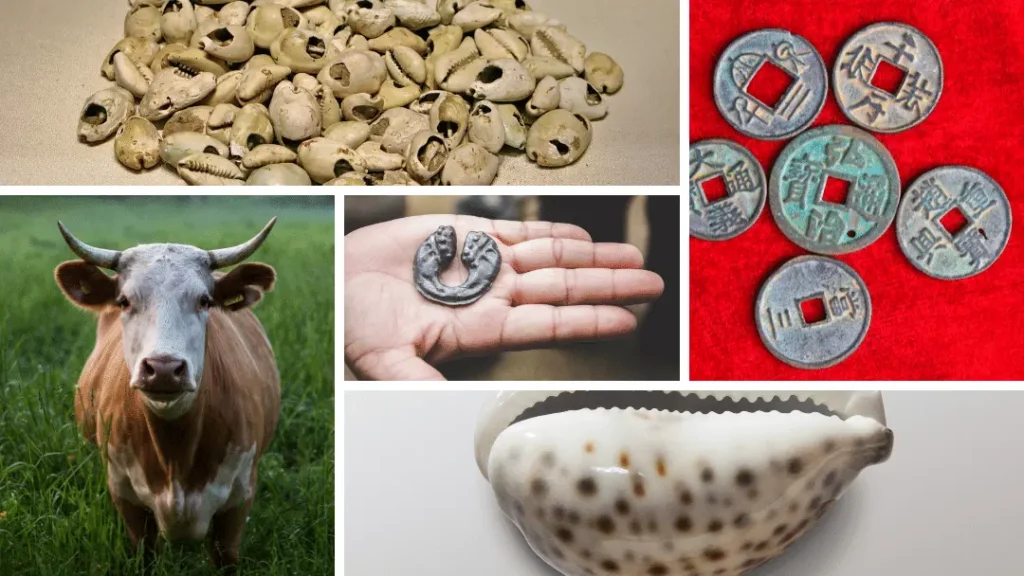To that end, we’ve created an overview of the roots of the world’s “ecommerce.” Before Visa, Mastercard, Discover, the internet, corrugated boxes, and poly mailers, this was how commerce, packaging, currency, and transport of goods took place.
Prehistoric “eCommerce” ( Ancient Commerce: 10,000 BCE to 5,000 BCE)
Prehistoric commerce practices can be gleaned from images on cave walls and archaelogical findings. Here’s what we know about packaging, currency, and the transport of goods during this least sophisticated time.
Prehistoric Packaging
The earliest packaging materials were animal skins, leaves, hollow logs, nutshells, or gourds. Later, clay pots and baskets made of plant fibers emerged.
Prehistoric Currency
To pay for goods, cattle served as money. But commerce wasn’t just about bartering or trading. Instead, cattle had a fixed value. (Imagine trying to fit that into your wallet!)
But it wasn’t until 6000 BCE that ancient Turkey (aka Lydia) minted the first coins. As we know, the use of coins would continue into the 21st century.
Prehistoric Transport of Goods
The people were nomadic, and wheels were nonexistent.

The “eCommerce” of Ancient Cultures (Ancient Commerce: ~ 5,000 BCE to 200 BCE)
Ancient Eastern and Middle Eastern cultures contributed to practices that exist to this day in some regions of the world. We summarize highlights regarding ancient packaging, shopping, currency, and the transport of goods in these ancient cultures.
Packaging of the Ancients
In most ancient cultures, such as Egypt, Greece, and Rome, clay was plentiful. As a result, the Ancients packaged food and drink in clay pots.
For example, ancient Greeks and Romans stored hundreds of gallons of wine, oil, or grain in each giant clay jar. For day-to-day needs, they used amphoras (tall jars with two handles and a narrow neck) or “ollas” (Egyptian jugs).

Packaging of the Ancients (cont.)
Either the Mesopotamians (Iraq) or Syrians invented glassmaking around 2500 BCE. At first, glassmakers molded solid beads. However, about 1450 BCE the Egyptians industrialized glassmaking of vessels; affluent Egyptians flaunted their wealth by using glass containers instead of pottery.
The Amazon.com of the Ancients
Instead of the internet, buys, sells, and trades occurred at large open markets.
Ancient Transport of Goods
Pack animals alone transported goods until the ancient Iraqis invented the wheel around 3500 BCE. By 800 BCE, wagons, carriages, and carts carried goods stored in pottery. Of course, no one worried about the price of gasoline. However, animal feed could be costly—especially for horses. For this reason, the wealthy hitched their wheeled vehicles to horses, but mules and donkeys pulled the cargo of the common people.

Ancient Currency
By 3000 BCE, equally-sized rings, bangles, and axe blades replaced cattle as currency.
Precious metals (copper, bronze, gold, and silver) and seashells provided the day’s credit cards by 1200 BCE. Additionally, durable mollusk shells, called cowrie, were commonplace “coins.” The Chinese pictographic for “money” was the cowrie shell.
However, all these types of currency were heavy to carry.

Conclusion
Nearly two thousand years would pass before ecommerce would begin taking hold. However, the business of selling goods would continue to change. In part 2 of putting the “E” into ecommerce, we explore commerce in the Middle Ages and the Age of Exploration.
Sources:
A History of Packaging. Ohio State University Extension.
The History of Paperboard. Paperboard Packaging Council.
A Brief History of Globalization. The World Economic Forum.
Doug Wertheimer

Get More Industry News Like This
Welcome to the Wertheimer Family! We'd like to keep you up to date with industry changes and news. Subscribe to receive our occasional news, updates and articles direct to your in-box.
